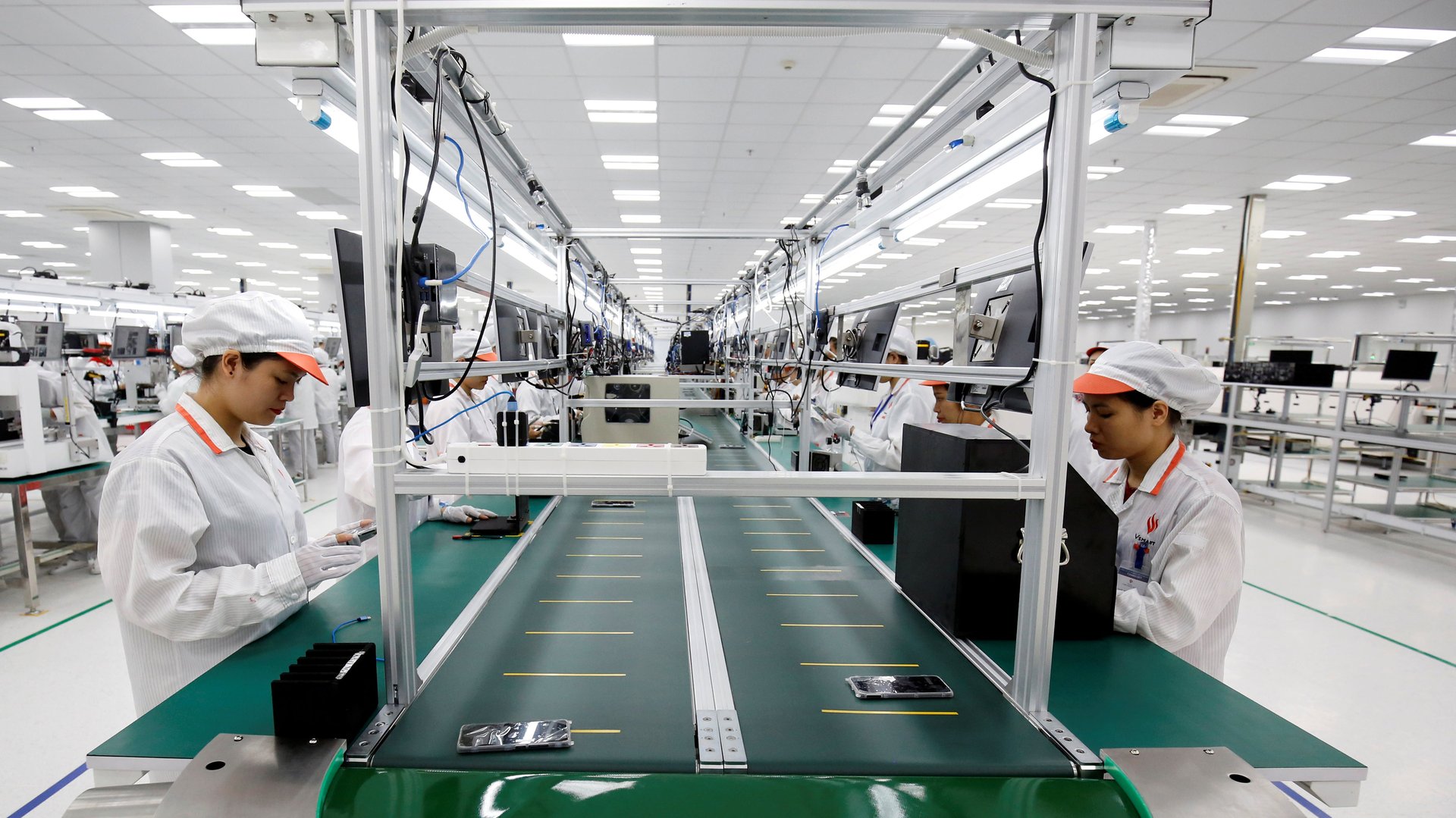Everyone’s winning the US-China trade war except the US and China
The tariffs imposed on goods traded between the United States and China are re-shaping the global economy, but not the way the chief antagonist in that battle, US president Donald Trump, has predicted.


The tariffs imposed on goods traded between the United States and China are re-shaping the global economy, but not the way the chief antagonist in that battle, US president Donald Trump, has predicted.
While trade with China has fallen slightly, the statistics also show that imports to the United States from other developing economies are fast increasing. In other words, the White House’s nationalist trade policy is changing where the United States sources its imports, not growing production at home.
Trump has defined trade deficits as the key metric in this battle, though economists would say that the balance of trade isn’t a useful metric on its own. Thanks to the new taxes imposed by the Trump administration on Americans who purchase Chinese goods, that metric has fallen quite a bit—in March 2019, the United States imported $20 billion more than it exported to China, the lowest deficit since March 2014. Still, in the first quarter of 2019, the United States purchased $80 billion more in goods and services from China than it exported there.
The overall trade deficit hasn’t gone away, with US government data from 2018 showing a record high US trade deficit of $891 billion. The reason is simple—US businesses looking to import cheap goods abroad are simply turning to different markets. One obvious choice is Mexico, where the United States had a record high trade deficit in March 2019, and from other advanced economies—imports from Germany and Japan hit record-high levels in March as well.
As the Council on Foreign Relations’ Brad Setser pointed out, one of the biggest winners is Vietnam, which has seen its trade with the United States increase dramatically. While some at the US Treasury are examining the situation for signs that Vietnam is artificially devaluing its currency to be more competitive in global markets, Setser concluded that “the recent jump in its surplus (and the surplus of many other East Asian economies) is almost certainly the consequence of Trump’s tariffs on China.”
Which makes sense, considering the country’s recent development trajectory as a kind of China in waiting, making everything from furniture to consumer electronics. Some Chinese companies have simply moved their factories into Vietnam in response to the new tariffs, while its participation in the Trans-Pacific Partnership, a global free trade deal, has integrated it more deeply into existing supply chains. It’s a similar story with Malaysia, also a TPP member.
All this suggests that the White House’s zero-sum approach to global trade policy is changing the world—but not necessarily to the benefit of the United States.